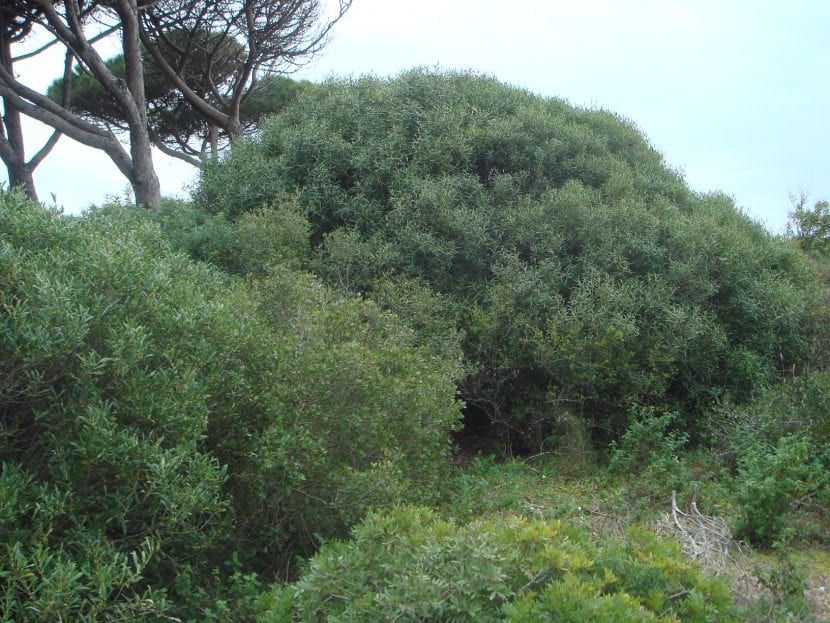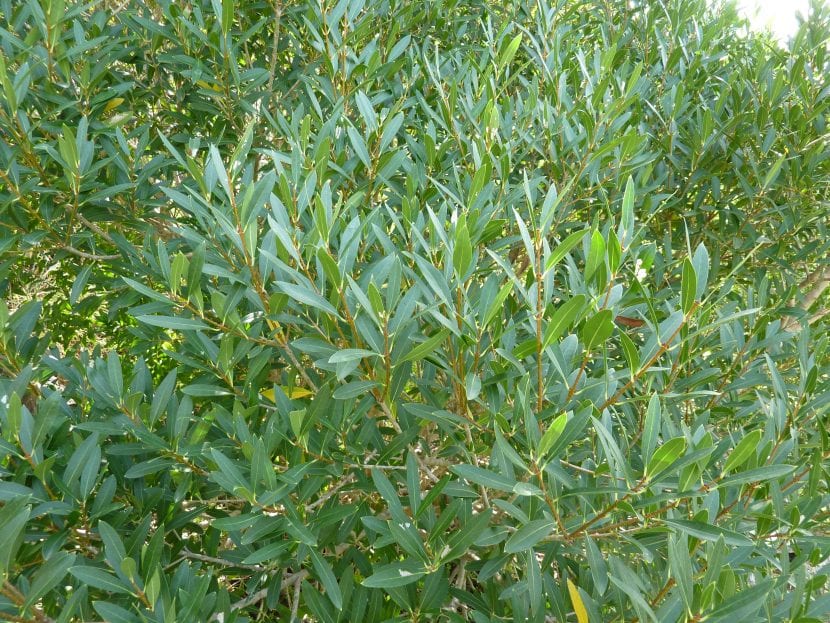
When living in an area where summer temperatures are very high, it is convenient to have plants that are capable of living well in those conditions, since otherwise we would end up wasting money and time. One of the most recommended is Phillyrea angustifolia, a shrub with which you can create beautiful hedges.
It is a species that, being native to the Mediterranean, is capable of better resisting higher thermal values than many others. Discover what are its characteristics and care.
Origin and characteristics

Our protagonist it is a plant that we can find in the Western Mediterranean (Italy, Spain and France). In the case of Spain, it will be easy for us to find it mixed with holm oaks (Quercus ilex), kermes (Quercus coccifera) or cork oaks (Quercus suber). Its scientific name is Phillyrea angustifolia, but it is better known as abiérgano, labiérnigo, ladierna, lentisquilla or olivillo.
It reaches a height of 2-5 meters, and is highly branched. The leaves are simple, lanceolate, opposite, evergreen, dark green in color and 6 centimeters long. The flowers are white and are composed of four sepals and four petals gathered in a short tube. The fruit is a fleshy drupe similar in appearance to olives.
What are their cares?

If you want to get a copy, we recommend providing the following care:
- Location: outside, in full sun.
- Earth:
- Pot: universal growing substrate mixed with 30% perlite.
- Garden: grows in limestone or slightly acid soils, with good drainage.
- Irrigation: every 2-3 days in summer and every 5-6 days the rest of the year.
- Subscriber: in spring and summer it must be fertilized with organic fertilizers, such as guano or manure from herbivorous animals. In the case of having it in a pot, you have to use liquid fertilizers.
- Planting or transplanting time: in spring.
- Pruning: early spring. Dry, diseased or weak branches must be removed. Those that have grown too much must also be trimmed.
- Multiplication: by seeds in spring.
- Rusticity: resists up to -6ºC minimum and up to 40ºC maximum.
Have you heard of the Phillyrea angustifolia?